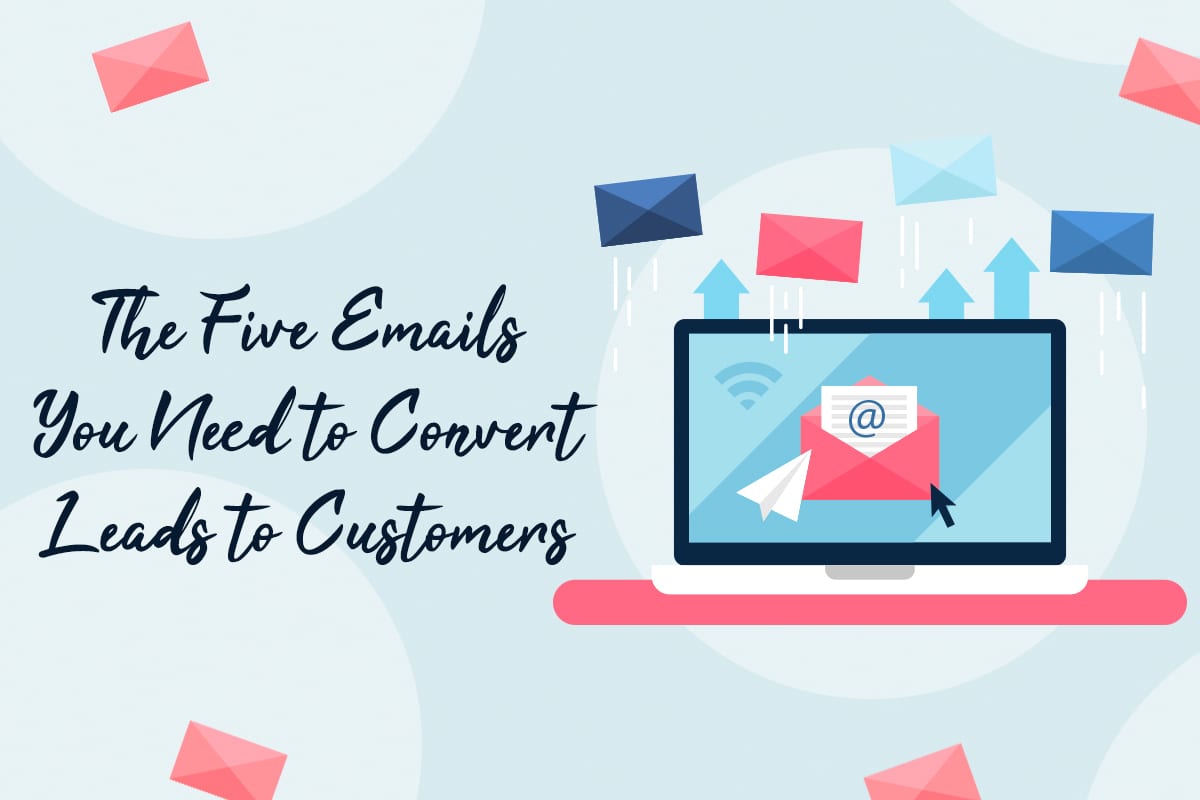- Telegram : t.me/pinc360
- Telegram : t.me/pinc360
- Branding and Marketing
- Jan 25
The five emails you need to convert leads to customers

In this day and age an infinite number of websites are popping out on a daily basis, it’s pretty hard for start-ups to gain a vast amount of visitors, let alone actual paying customers. Indeed, there’s no such thing as a free lunch; people don’t just waltz into your website and automatically purchase something without some nurturing from your part.
So how can you turn your visitors into customers?
It’s quite simple really, all you need is a strategy!
The key is creating high-value conversion funnels that will shepherd your visitors along the customer lifecycle smoothly. Offering free or generously priced content at first is one way of enticing them to enter a fruitful relationship with you as your customer. Because once they’ve gotten a taste of what you have to offer, they’d come crawling back for more – even if its now at a higher price point.
However, creating a successful conversion funnel is as easy as it sounds. The key to ensuring your leads remain faithful lies in consistent customer engagement at varying stages of the customer lifecycle, which can be broken down into the Attract and Convert phases.
In the Attract phase, one of the fundamental priorities is to acquire the email addresses of your prospective customers; maintaining contact with them long enough for you to convert them – through the aforementioned offerings of free content – once you’ve reach the Convert phase. So how do we convert them into customers? Well, all you need to do is to construct an offer funnel – composing of five emails – that integrates your main product into the content that functions to attract prospective customers. Each email is constructed with a different angle, aimed towards each one of your contacts in order to persuade them to purchase your products. It involves a delicate balance of frequency, where emails should be sent a week apart to avoid irking your leads, yet not too infrequently that it fades into obscurity from their feeds.
Below is a quick guide on what approaches you can take, and the type of content to write that will convince your prospects to purchase your products.
Structuring your offer emails
Generally, it’s important that your email is informative, entertaining, and consistent!
When to Send: The moment your customer subscribes to your entry-level service or product, with subsequent emails being sent on a weekly basis.
Approach: Each of your emails should appeal to your customers from different perspectives! More on this in the next sections.
Subject: Catchy, informative, and truthful. As long as you follow these three rules, your customers will never ignore your email!
Pre-Header: It’s not enough to have a subject line customers are interested in a brief description too. Just make sure this one supports your subject and is easy to understand.
Greeting: It’s always best to start your email with a welcome, make your emails sound more “human” and sincere by including your lead’s first names in each greeting.
Body: All it needs is to be simple, relevant, and direct-to-the-point. No unnecessary puns or fancy wordings, just the right information is the key! Any longer, and your lead may just stop paying attention altogether.
Call-to-Action: This is one of the most critical parts of the email. You’ve already put in all the time and effort to promote your product, it would be a shame if your lead did not follow through. Now is the best time to prompt your lead into purchasing your product.
NB: Strike while the iron is hot!
Sign-Off: Be Consistent! Place a signature, and make it distinctive, so that will enable your customers to remember you easily.
Which approach to adopt?
Email #1 – Emotional appeal
Delivery date: The day after purchasing of entry product
Approach: What can your customers gain from your product? You should mainly talk about their needs on a personal level — an appeal to their emotions. It’s a quick snapshot of what they can attain from buying your product and how it will improve their lives for the better. To successfully appeal to your leads, always remember to align the content with their intrinsic needs.
Example: A marketing executive from PINC may highlight the benefits of gaining more PINCs, such as financial perks and greater market share within the fashion industry when other users like their posts!
Email #2 – Capitalising on the fear of exclusion
Delivery date: 7 days after the first email
Approach: Your second email should focus on what your leads will miss if they don’t purchase the product. You can do this by presenting solutions towards some worst-case scenarios that only your product can prevent.
Here’s a tip: fear works best when a solution is presented hand in hand. Too much fear however, and you might just scare your leads of into the darkness. So do tread with caution.
Example: The same marketing executive from PINC must now consider what actions he must take in order to retain market share and existing customers, and what are the implications should he lose either.
Email #3 – Logical appeal
Delivery date: 7 days after the second email
Approach: After appealing to your lead’s emotions, it is time to appeal to his or her logic. Highlight the pragmatic features of your product with an emphasis on how it can satisfy those needs, and reiterate. You can further justify your argument using evidence from credible sources.
Example: An email from a PINC marketing executive can be about how many people are currently using the platform and how PINC can quantify the actual “influence” of social media influencers for the brands. For users, PINC can present how much they can potentially earn from posting on the site.
Email #4 – Is this still troubling you?
Delivery date: 7 days after the third email
Approach: A dose of empathy is what your fourth email should comprise of. Your leads would appreciate it if you are understanding towards the problems they might encounter. Hence, what better an opportunity than to highlight how your product or service can provide a permanent solution for an outstanding problem.
Example: You may use questions such as, “not getting paid enough from your fashion pursuits?”
Email #5 – which package would you like?
Delivery date: 7 days after the fourth email
Approach: Just like the previous email, this is your final push. It should be all about how your product is the only solution towards your lead’s problems! In short, it is a hard push where all the stopgaps are removed and you fight tooth and nail to convince your lead to purchase your product or service.
Example: Collective testimonials from PINC users, whereby they stress how the product or service has benefitted them significantly in many ways.
In a nutshell…
Successfully converting your leads into customers require a significant amount of nurturing, as well as the acumen of adopting a different strategy for each stage of the customer lifecycle. But follow these five steps and chances are, you’ll likely be converting more people into customers within a month!
Speak with us here and let us help you determine what works best for you!
Related Posts

Three amazing social media campaign ideas and why they worked
As a marketer, social media campaigns are one of a few great ways to promote your brand or market your product or services. It’s for the best that you keep your social media content postings consistently of high quality and engaging standards. Your social media campaigns should always be filled with energy and excitement to…
- May 16

Noteworthy Valentine’s Day Campaigns for 2021
A day where guys burn their savings like a bullet train and girls sharing about their unique Valentine date experiences on social media, Valentine’s Day is celebrated both on a personal and a corporate level….
Basket
Product categories
- Agency (10)
- Platform (26)
- Digital and Social Media (12)
- Lead Generation (3)
- Public Relations (1)
- Technology Development (10)
Categories
Latest Posts
WordPress vs. Wix: Which is better for professionals?
- October 6, 2023
7 signs of a top-quality Instagram marketing strategy
- October 6, 2023
5 benefits of LinkedIn for business growth
- October 6, 2023
What is PR? A quick guide to public relations
- October 6, 2023
Top 12 WordPress plugins you need for your business website
- October 6, 2023





